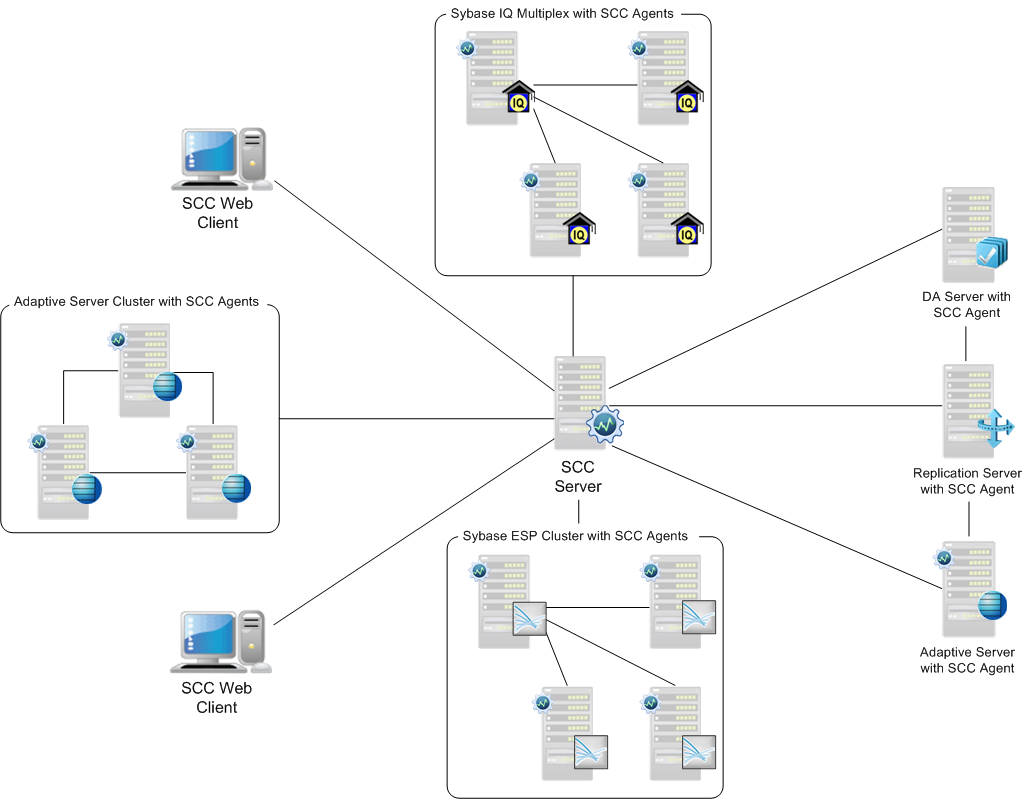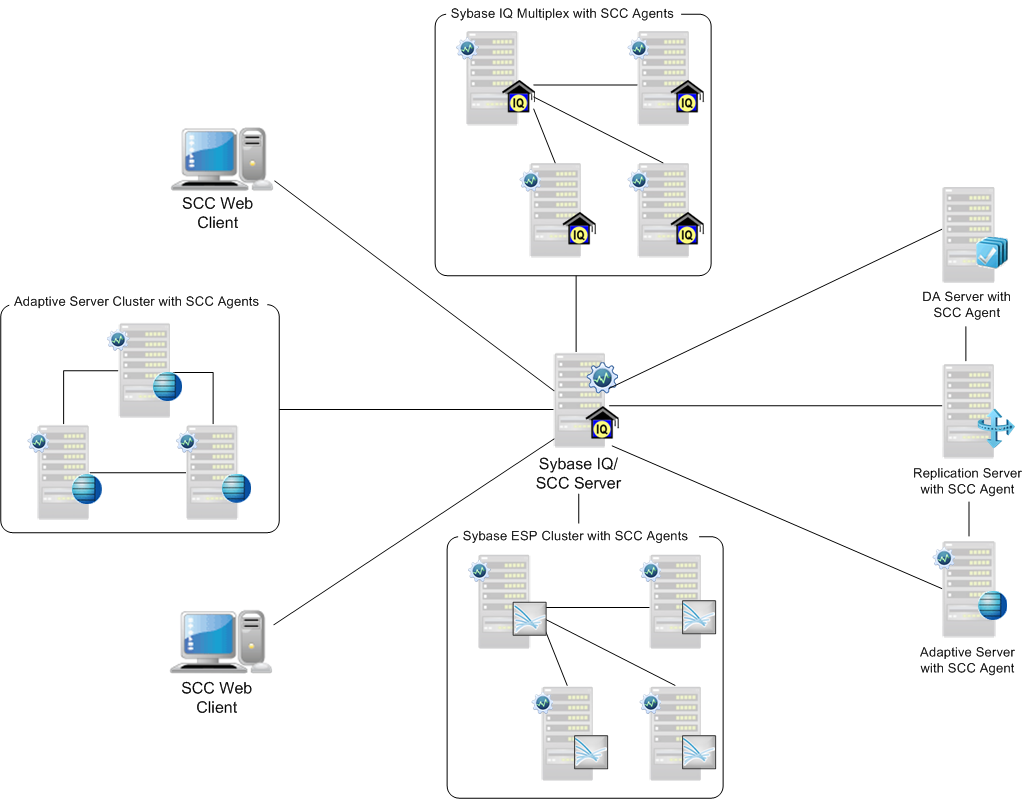Prepare for the installation.
Sybase Control Center employs a Web-based multitier architecture that allows multiple SCC clients to monitor and manage all supported Sybase servers in an enterprise using a small number of SCC servers—often, you need only one. An SCC remote command and control agent is installed with each managed server that requires it. The SCC client is a rich Internet application that runs in a Web browser. It requires the Adobe Flash Player plug-in version 10.x or later.
- Identify a host on which to run each Sybase Control Center server you need to
deploy. These are typical SCC environments.In this scenario the Sybase Control Center server, which provides the management UI, is installed on a dedicated host. An SCC remote command and control agent is installed with each managed server. The Web clients require no SCC software.In this scenario the Sybase Control Center server, which provides the management UI, shares a host with a managed server. (Here, the managed server sharing the SCC host is Sybase IQ, but it could be of any type.) Other managed servers are installed with SCC remote command and control agents. The Web clients require no SCC software.
- Make sure the computer on which you plan to run Sybase Control Center meets the System Requirements.
- Make sure the computer on which you plan to run SCC has good network connectivity to the servers it will manage and to the client workstations.
- Consider
these deployment issues:
- Minimizing network latency – you see better performance if you install Sybase Control Center near the monitored servers and near the workstations on which SCC Web clients are running.
- Unified Sybase Control Center environment – consider installing the SCC server in a central location. Add all the SCC product module plug-ins you need (SCC for Adaptive Server, SCC for Data Assurance, SCC for ESP, SCC for Replication, or SCC for Sybase IQ) to the central installation. This lets you manage and monitor your servers from one SCC installation, which is especially useful in a replication environment.
- Administration and security – you can exercise differing levels of control in different parts of your enterprise, for example, by protecting the data in some servers more strictly than in others.
- Involve others in the preparations, particularly if you are planning a UNIX deployment. Configuring SCC security on a UNIX server requires root privileges.
- Read the Sybase Control Center Release Bulletin to learn about known issues and changes that came up too late to be included in the Sybase Control Center help.
- Install patches for your operating
system required for Java Runtime Environment (JRE) 6 and 7, if any.See oracle.com for information on OS patch levels for JRE 6 and JRE 7. You need OS patches for both JREs because the SCC installer uses JRE 6, but SCC itself uses JRE 7.Note: You need not install or upgrade the JREs; they are included in the SCC installer.
- Decide where in the file system to install Sybase Control
Center. Do not install into a directory that is named using non-ASCII
characters. If the file system already includes a Sybase directory, consider installing SCC there.If you are installing SCC in an Adaptive Server cluster, Event Stream Processor cluster, or Sybase IQ multiplex environment, consider using shared-disk mode. Shared-disk mode lets you run multiple SCC instances (any combination of SCC servers and SCC agents) from a single SCC installation. For more information, see the SCC online help on the Product Documentation Web site at http://sybooks.sybase.com/sybooks/sybooks.xhtml?prodID=10680.

